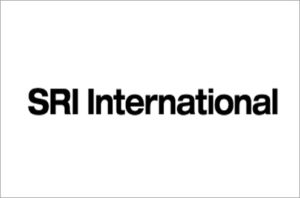
Date: 01/17/1986
On January 17, 1986 SRI.com became the 8th registered “.com” domain.SRI International (SRI) is an American nonprofit research institute headquartered in Menlo Park, California. The trustees of Stanford University established SRI in 1946 as a center of innovation to support economic development in the region. The organization was founded as the Stanford Research Institute. SRI formally separated from Stanford University in 1970 and became known as SRI International in 1977. SRI describes its mission as creating world-changing solutions to make people safer, healthier, and more productive. It performs client-sponsored research and development for government agencies, commercial businesses, and private foundations. It also licenses its technologies,forms strategic partnerships, sells products, and creates spin-off companies. SRI’s focus areas include biomedical sciences, chemistry and materials, computing, Earth and space systems, economic development, education and learning, energy and environmental technology, security and national defense, as well as sensing and devices. SRI has received more than 4,000 patents and patent applications worldwide.
History
In 1986, SRI.com became the 8th registered “.com” domain. The Artificial Intelligence Center developed the Procedural Reasoning System (PRS) in the late 1980s and into the early 1990s. PRS launched the field of BDI-based intelligent agents. In the 1990s, SRI developed a letter sorting system for the United States Postal Service and several education and economic studies. Military-related technologies developed by SRI in the 1990s and 2000s include ground- and foliage-penetrating radar, the INCON and REDDE command and control system for the U.S. military, and IGRS (integrated GPS radio system)—an advanced military personnel and vehicle tracking system. To train armored combat units during battle exercises, SRI developed the Deployable Force-on-Force Instrumented Range System (DFIRST), which uses GPS satellites, high-speed wireless communications, and digital terrain map displays. SRI created the Centibots in 2003, one of the first and largest teams of coordinated, autonomous mobile robots that explore, map, and survey unknown environments.
With DARPA-funded research, SRI contributed to the development of speech recognition and translation products and was an active participant in DARPA’s Global Autonomous Language Exploitation (GALE) program.[81] SRI developed DynaSpeak speech recognition technology which was used in the handheld VoxTec Phraselator, allowing U.S. soldiers overseas to communicate with local citizens in near real time. SRI also created translation software for use in the IraqComm, a device which allows two-way, speech-to-speech machine translation between English and colloquial Iraqi Arabic. In medicine and chemistry, SRI developed dry-powder drugs, laser photocoagulation (a treatment for some eye maladies), remote surgery (also known as telerobotic surgery), bio-agent detection using upconverting phosphor technology, the experimental anticancer drugs Tirapazamine and TAS-108, ammonium dinitramide (an environmentally benign oxidizer for safe and cost-effective disposal of hazardous materials), the electroactive polymer (“artificial muscle”), new uses for diamagnetic levitation, and the antimalarial drug Halofantrine. SRI performed a study in the 1990s for Whirlpool Corporation that led to modern self-cleaning ovens. In the 2000s, SRI worked on Pathway Tools software for use in bioinformatics and systems biology to accelerate drug discovery using artificial intelligence and symbolic computing techniques.[88] The software system generates the BioCyc database collection, SRI’s growing collection of genomic databases used by biologists to visualize genes within a chromosome, complete biochemical pathways, and full metabolic maps of organisms.
Early 21st century
SRI researchers made the first observation of visible light emitted by oxygen atoms in the night-side airglow of Venus, offering new insight into the planet’s atmosphere. SRI education researchers conducted the first national evaluation of the growing U.S. charter schools movement. For the World Golf Foundation, SRI compiled the first-ever estimate of the overall scope of the U.S. golf industry’s goods and services ($62 billion in 2000), providing a framework for monitoring the long-term growth of the industry. In April 2000, SRI formed Atomic Tangerine, an independent consulting firm designed to bring new technologies and services to market. In 2006, SRI was awarded a $56.9 million contract with the National Institute of Allergy and Infectious Diseases to provide preclinical services for the development of drugs and antibodies for anti-infective treatments for avian influenza, SARS, West Nile virus and hepatitis. Also in 2006, SRI selected St. Petersburg, Florida, as the site for a new marine technology research facility targeted at ocean science, the maritime industry and port security; the facility is a collaboration with the University of South Florida College of Marine Science and its Center for Ocean Technology. That facility created new a method for underwater mass spectrometry, which has been used to conduct “advanced underwater chemical surveys in oil and gas exploration and production, ocean resource monitoring and protection, and water treatment and management” and was licensed to Spyglass Technologies in March 2014.
In December 2007, SRI launched a spin-off company, Siri Inc., which Apple acquired in April 2010. In October 2011, Apple announced the Siri personal assistant as an integrated feature of the Apple iPhone 4S. Siri’s technology was born from SRI’s work on the DARPA-funded CALO project, described by SRI as the largest artificial intelligence project ever launched. Siri was co-founded in December 2007 by Dag Kittlaus (CEO), Adam Cheyer (vice president, engineering), and Tom Gruber (CTO/vice president, design), together with Norman Winarsky (vice president of SRI Ventures). Investors included Menlo Ventures and Morgenthaler Ventures. For the National Science Foundation (NSF), SRI operates the advanced modular incoherent scatter radar (AMISR), a novel relocatable atmospheric research facility. Other SRI-operated research facilities for the NSF include the Arecibo Observatory in Puerto Rico and the Sondrestrom Upper Atmospheric Research Facility in Greenland. In May 2011, SRI was awarded a $42 million contract to operate the Arecibo Observatory from October 1, 2011 to September 30, 2016. In February 2014, SRI announced a “photonics-based testing technology called FASTcell” for the detection and characterization of rare circulating tumor cells from blood samples. The test is aimed at cancer-specific biomarkers for breast, lung, prostate, colorectal and leukemia cancers that circulate in the blood stream in minute quantities, potentially diagnosing those conditions earlier.